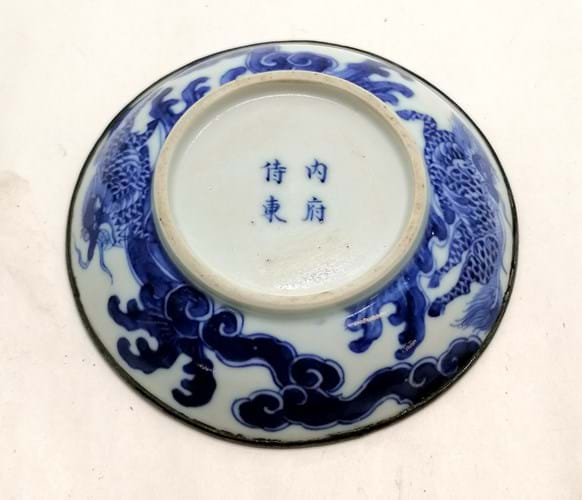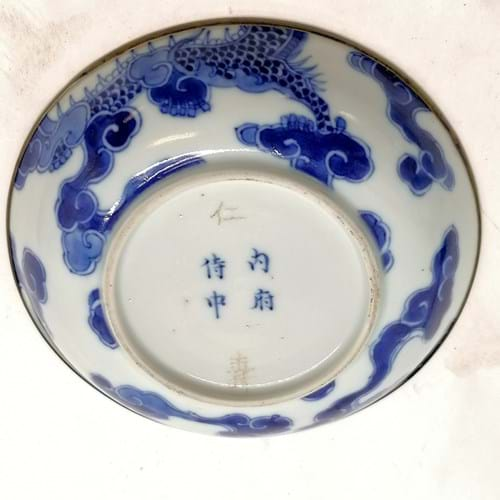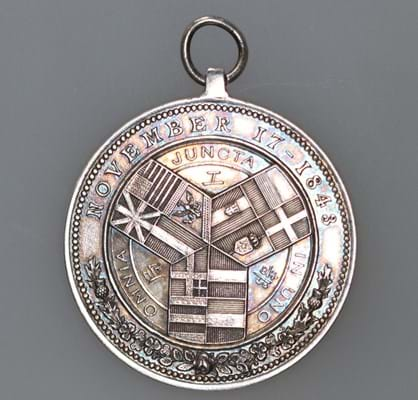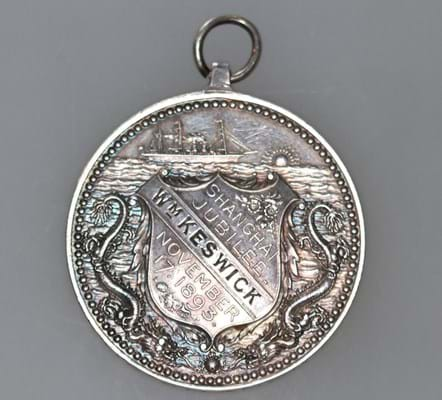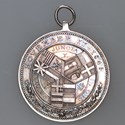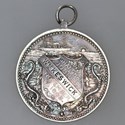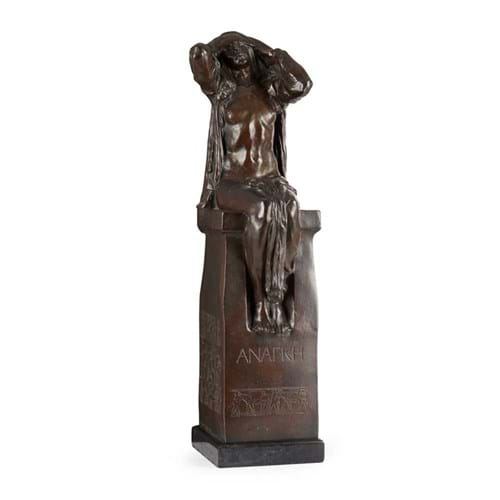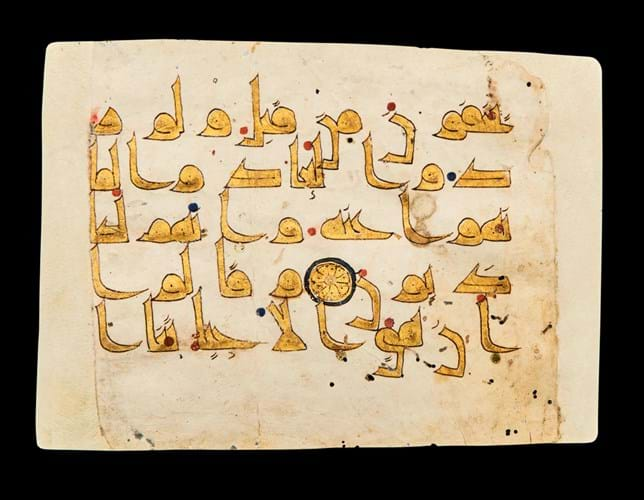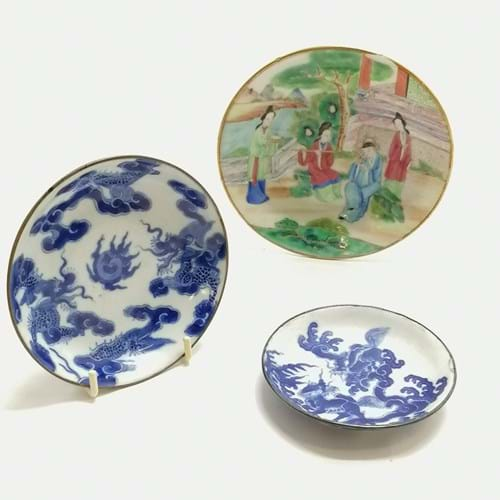
The bleu de Huế porcelain dishes made in China for the Vietnamese market, £20,500 at Acreman Street Antique Auctions.
1. Huế porcelain dishes – £20,500
Two Chinese blue and white dishes, recognised by bidders as examples of the bleu de Huế porcelain, flew to £20,500 at the Acreman Street auction house in Sherborne, Dorset on January 26.
The two dishes, offered together with a chipped Cantonese dish of little value, had been expected to bring just £100-150. The winning bid came online via thesaleroom.com.
Vietnamese buyers have sent the best works of art from the Nguyen (1802-1945) dynasties to unchartered territory in recent years. A particular area of collecting focus is the bleu de Huế porcelain that was made in China to Vietnamese designs. Often these pieces (named after Huế, the Nguyen capital and site of the Forbidden Purple City) include the bespoke marks of royal family members and court officials.
An influential exhibition titled Signed porcelains from the Lê, Trinh and Nguyen Dynasties was held at the Museum of Royal Antiques of Hue in 2018.
The larger of the two pieces offered in Dorset measured 11cm across and was decorated to the bowl and the underside with two dragons facing the flaming pearl among waves and clouds. It had both a four-character mark in blue and two incised characters. The slightly-damaged smaller dish, decorated with the mythical kylin against a similar ground, had a different four-character mark.
Both had the protective silver rims of the type that became popular on Vietnamese porcelain in the late 19th century.
Many of these pieces came to Europe in the years under colonial rule. From the aftermath of the Sino-French War in 1884-85 until the last months of the Second World War, the Nguyen emperors ruled only nominally as heads of state of the French protectorates.
Extraordinary sums have been achieved for Nguyen bleu de Hue porcelain in both France and Ireland. At Adam’s in Dublin in November 2021, a 16cm plate finely decorated with a dragon, a qilin and the khanh (happiness) and tho (longevity) symbols flew to €140,000 (£127,300).
The four-character mark to the reverse read khánh xuân thị tả (Eternal Spring, Left Palace), a reference to a residence owned by the Trinh clan, the family that dominated the royal court in the Later Le period.
2. ‘Queen Victoria’s post box’ – £14,500
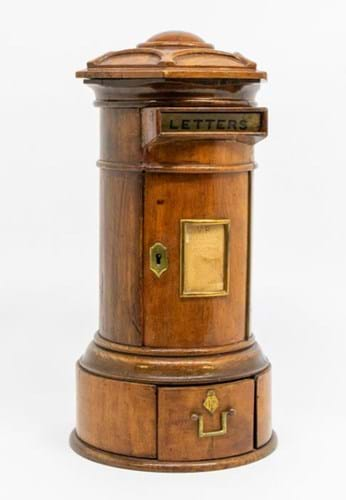
Late Victorian oak ‘country house’ post box with a provenance to Carisbrooke Castle, £14,500 at Hansons.
The sale at Hansons in Teddington on January 28 included what was marketed as ‘Queen Victoria’s post box’. Quite whether or not she had ever used the late Victorian oak ‘country house’ pillar box is unclear but it had a more robust provenance to Carisbrooke Castle in the Isle of Wight, that for many years was the summer home of Victoria’s youngest daughter Princess Beatrice.
She was appointed governor of the island in 1896 and continued to use the castle, restored and modified for HRH by the architect Percy Stone, until 1938. Her death in 1944 was followed in September 1945 by a sale conducted by local auctioneer Marvin & Son and it was here that the 15in (37cm) high post box, catalogued as lot 92 along with an umbrella stand, was purchased by the vendor’s grandfather.
These are always popular items, selling in the £3000-5000 range depending on condition but Hansons thought this one, with some condition issues but a blue blood story attached, might bring more. They were right: estimated at £4000-6000, it sold to an online bidder at £14,500.
3. Shanghai Jubilee Medal – £6400
The Shanghai Jubilee Medal was instituted in 1893 to commemorate the 50th anniversary of the First British consul created after the Treaty of Nanking in 1843. The medal was struck in China in both silver and bronze and presented to various dignitaries during the Jubilee celebrations on November 17, 1893. Approximately 625 silver and 100 bronze medals were issued with a silver clasp inscribed 1843-1893 awarded with the medal ribbon.
This example, offered for sale at Denhams in Horsham, West Sussex on January 25 was awarded to a W M Keswick – probably the trader and later politician William Keswick (1834-1912). The patriarch of an influential shipping family working in Hong Kong and China, his company operated as merchant traders and had a major influence in both the First and the Second Opium Wars.
The company stopped trading opium in 1870 to instead pursue shipping, railways, textiles and property development. Later, after moving to Surrey, William Keswick was elected the Conservative MP for Epsom in 1899 and held the seat until shortly before he died in 1912.
Shanghai Jubilee medals are desirable issues, today appealing to numismatists in the Far East at prices way above those they previously garnered from British and European collectors. This example, that was pretty much as struck (although without a ribbon and clasp), was estimated at £300-500 but took £6400.
4. Drawing of Albert Einstein – £4800
Estimated at just £50-80, a red chalk drawing of Albert Einstein by the Danish artist Ivan Opffer sold for £4800 at the Stamford Auction Rooms in Lincolnshire on January 28.
The winning bid came online via thesaleroom.com.
Ivan Opffer (1897-1980) is remembered for his portraits of writers and other notable figures. Although born in Denmark, he moved first to Mexico, then to New York where he studied at the National Academy of Design and finally to Paris sketching James Joyce, Edgar Lee Masters, Siegfried Sassoon, George Bernard Shaw and Carl Sandburg among others.
This characterful portrait, measuring 53 x 39cm is signed and dated 1933 and dedicated 'For Louba Hambourg with Kindest Regards Ivan Opffer’. Luba Hambourg appears to be a member of the German-Jewish family that included her brothers, the musicians Boris, Jan and Mark Hambourg.
The year 1933 was momentous for all German Jews. While visiting the US, Einstein learned that Hitler had come to power, and he began the process of becoming an American citizen.
5. First World War bronze – £28,000
Nine pieces by or attributed to the British sculptor Gilbert Bayes (1872-1953) formed part of the collection of architect and designer Chris Hancock sold by Lyon & Turnbull in Edinburgh on January 25.
Working in London and living in St Albans, Hancock was an enthusiastic collector of late 19th and 20th century works of art for close to 50 years, his wife likening their partnership as ‘akin to living with a museum curator with his own private museum’.
His admiration of Bayes ranged from a Cupid and the Lovers silvered bronze buckle c.1900 (£400) to elements of the St Pancras Housing Association project made by Royal Doulton in the 1930s. One of the washing line post finials, modelled as a Roman galleon, had some condition issued but took £1200.
However, leading the Bayes’ offering at £28,000 (estimate £6000-8000) was the emotive First World War work of a semi-nude grieving female titled Anatkh or Destiny.
Bayes rose to prominence in tandem with the burgeoning demand for monumental sculpture in the wake of the First World War, his workshop at the forefront of the war memorial movement. Destiny was shown at the Royal Academy in 1916, and subsequently used as the centrepiece for the Ramsgate War Memorial.
This bronze statuette of the model standing 23in (59cm) high on its slate base, was produced later in 1918.
6. North African vellum Qur’an – £75,000
Islamic Art specialist Plakas Auctions sold a privately-entered group of 11 Qur’an folios from the early years of Islam in London on January 30.
Together they show the evolution of calligraphy that laid the ground for the development of the modern script in use today.
The earliest folio in the group, measuring 5 x 7.5in (13 x 19cm), was from a manuscript on vellum written in North Africa as early as the 9th century.
The Kufic text is worked on gold with brown outlines on each side with five lines from the Sura Al-An’am. Parchment such as this would have most likely been once part of small multi-volume Qur'ans, which were very popular in the 9th and 10th centuries. Their style tended to be strikingly simple with each folio containing just a few lines of text. The focus was simply on the written word and the austerity and beauty of the Kufic script itself, with gold rosette markers and discreet green, blue and red dots for the vocalisation the only embellishment.
Probably penned at one of the wealthiest Fatimid or Umayyad courts, it was estimated at £6000-8000 but sold at £75,000.


